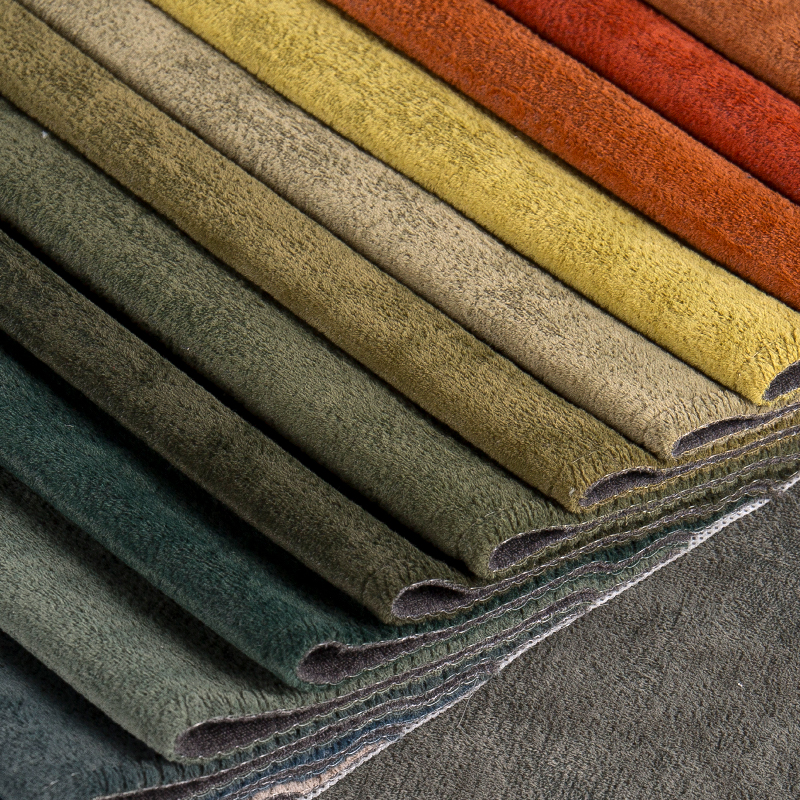Jan 20, 2025
During the dyeing process of polyester bronzing sofa fabric, controlling the depth of dye penetration is a critical step. It directly affects the fabric's color fastness, uniformity, and overall appearance. Below are methods to control dye penetration depth:
I. Dye Selection
1. Choosing Suitable Dyes:
Use disperse dyes compatible with polyester fibers, which penetrate well into the fiber under high-temperature and high-pressure conditions.
Ensure the dyes exhibit good dispersibility and stability to minimize coagulation and precipitation during the dyeing process.
2. Selection of Dyes for Color Blending:
For color blending, select disperse dyes with similar hues and migration properties to ensure uniform dyeing.
II. Dyeing Process Control
1. Dyeing Temperature and Time:
Maintain appropriate dyeing temperature and duration. Polyester dyeing typically requires high-temperature and high-pressure conditions to ensure sufficient dye penetration into the fibers.
Excessively high temperatures or prolonged dyeing times may cause over-penetration, affecting fabric texture and color fastness. Conversely, insufficient temperature or time may lead to inadequate penetration, impacting dyeing uniformity.
2. Dyeing Bath Ratio:
The dye bath ratio (the proportion of dye solution to fabric weight) affects dye penetration depth. A proper bath ratio ensures uniform distribution and adequate penetration of dyes.
A high bath ratio may result in low dye concentration, leading to insufficient penetration, while a low bath ratio may cause overly high dye concentration, resulting in uneven dyeing or over-penetration.

3. pH Value Control:
Some disperse dyes are sensitive to pH levels, making it essential to strictly control the pH during dyeing.
Use appropriate pH regulators to maintain a stable pH environment, ensuring proper dye penetration and fixation.
III. Use of Additives
1. Penetrants:
Adding suitable penetrants can enhance the speed and uniformity of dye penetration.
The choice of penetrants should align with the characteristics of polyester fibers and the properties of the dyes.
2. Leveling Agents:
Employ leveling agents to reduce color differences and streaks during dyeing.
Leveling agents should be compatible with the dyes and provide even dispersion during the dyeing process.
IV. Post-Treatment
1. Reduction Cleaning:
Perform reduction cleaning after dyeing to remove unfixed dyes and impurities.
The temperature, duration, and pH conditions for reduction cleaning should be determined based on the dyes' properties and fabric characteristics.
2. Heat Setting:
Heat setting fixes the dye penetration depth and improves the dimensional stability of the fabric.
The setting temperature and time should be selected based on the thermal properties of the fabric and the thermal stability of the dyes.